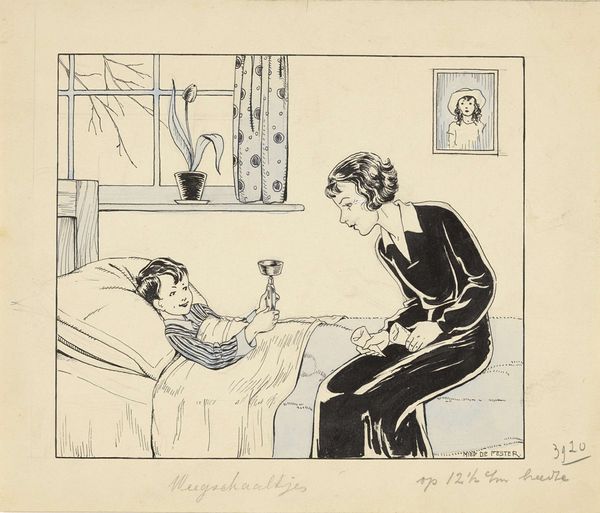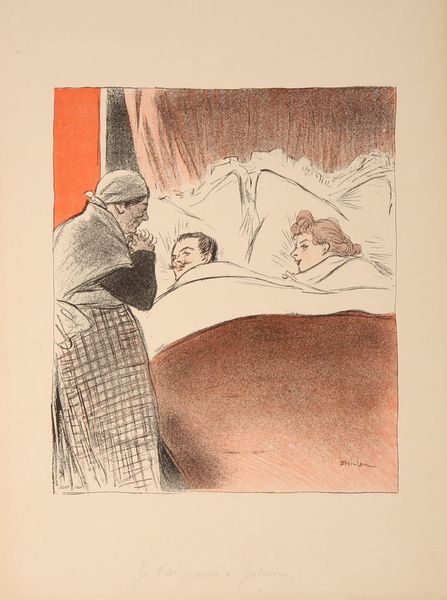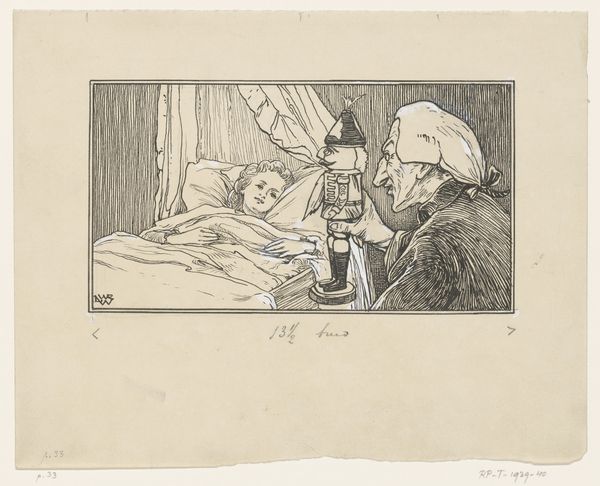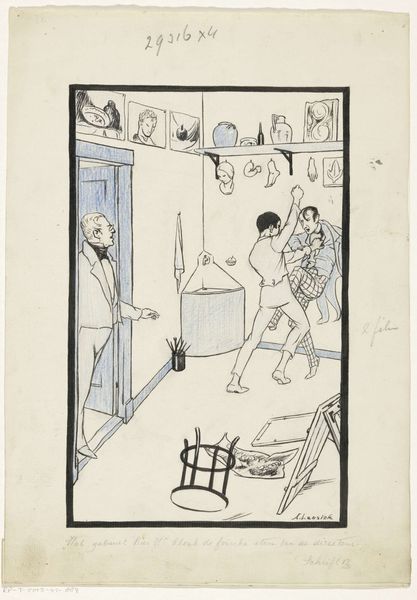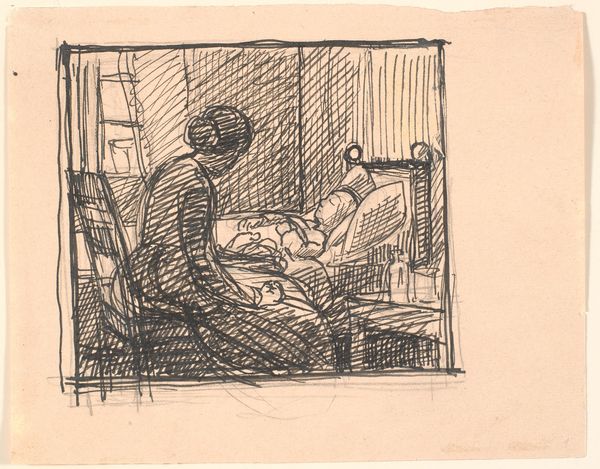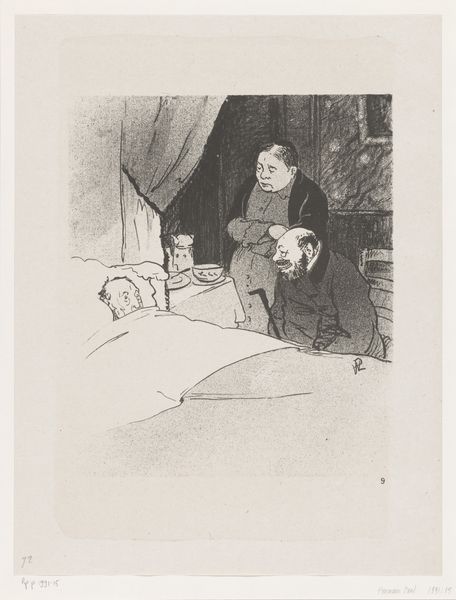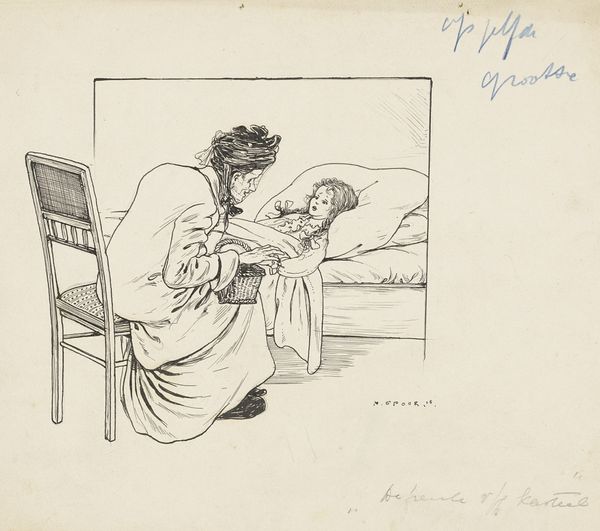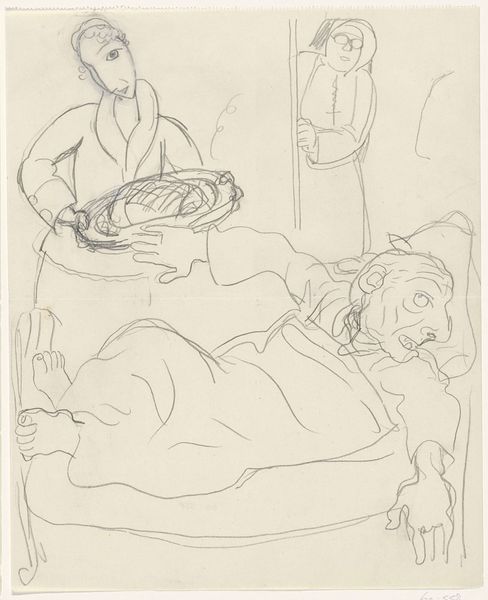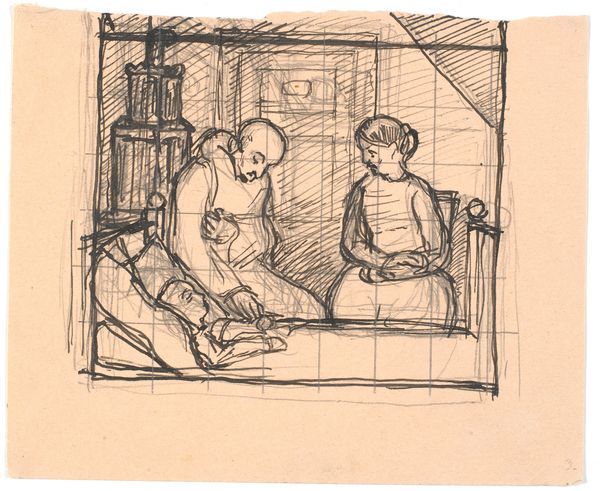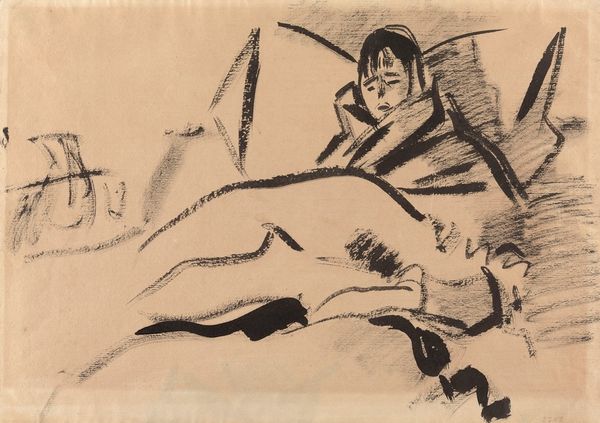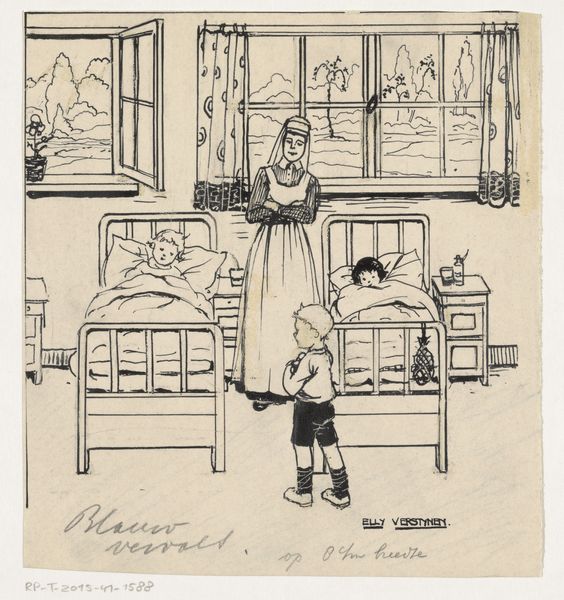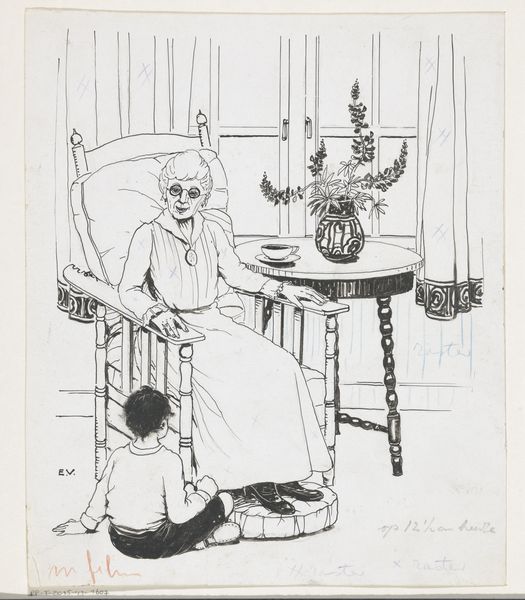
Dimensions: height 133 mm, width 171 mm
Copyright: Rijks Museum: Open Domain
Curator: This is "Dokter bezoekt een ziek meisje," or "Doctor visiting a sick girl," by Anny Leusink, dating from around 1920 to 1930. It looks to be made with pen and ink, judging by the visible strokes. Editor: Yes, the cross-hatching in the doctor's coat gives it a newspaper comic-strip feel. It’s such a simple image, yet it evokes so much warmth and concern, especially in the children's faces. I'm curious, what stands out to you about this piece? Curator: What strikes me is how the artist is employing this readily accessible material to explore very immediate social concerns. Look at the doctor, his posture suggests both authority and genuine concern for the child's well-being. How does the context of its production—perhaps amidst post-war austerity—shape our understanding of it as a representation of healthcare and domestic life? The inscription at the bottom—"Hebt U niet wat wol voor mij Dokter?"—How does that affect your view? Editor: The phrase under the image does shift my perspective. That scarcity emphasizes the societal reliance on the doctor to help her, as he’s almost perceived as the only figure that is able to care for her. The fact that he is needed, implies an absence. What absence are we talking about here? Curator: Indeed. The labour evident in every pen stroke and detail becomes meaningful, revealing the economic circumstances within which the image was conceived. Consider how readily accessible the materials are: pen, ink, paper, a commentary for popular press, all speaking to both its function and its place in the broader consumer culture of the time. And those quickly accessible material have the doctor ready at her doorstep, the care seems implied. Editor: So by focusing on these common resources, the artist makes the concern tangible to those who see it. I see now, how that informs how we value art in culture, connecting material and significance. Curator: Exactly, the art in question here doesn’t just communicate, but connects the act of making to broader socio-economic circumstances.
Comments
No comments
Be the first to comment and join the conversation on the ultimate creative platform.
